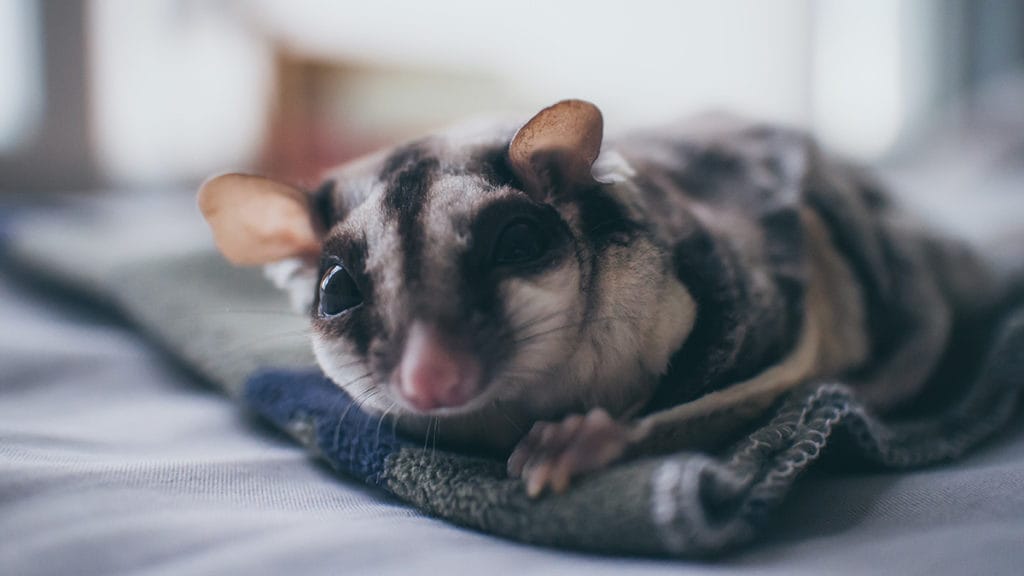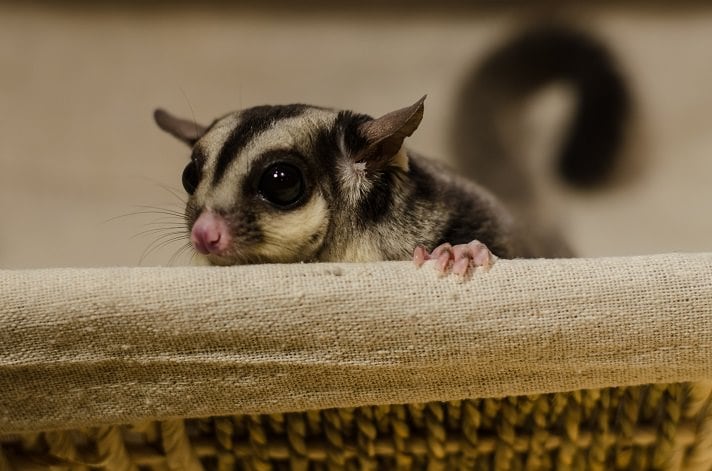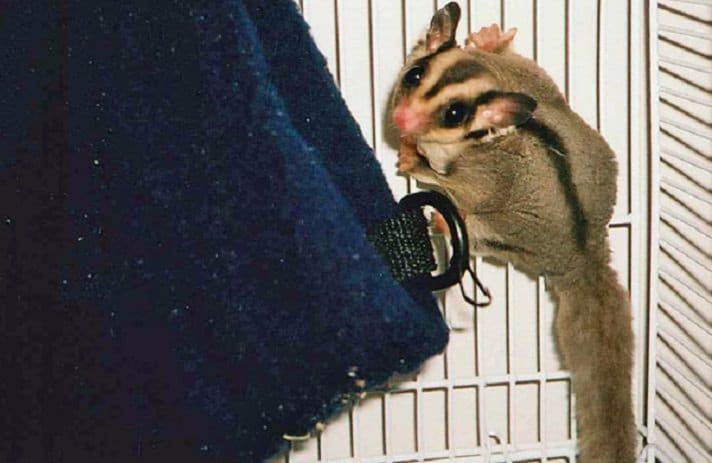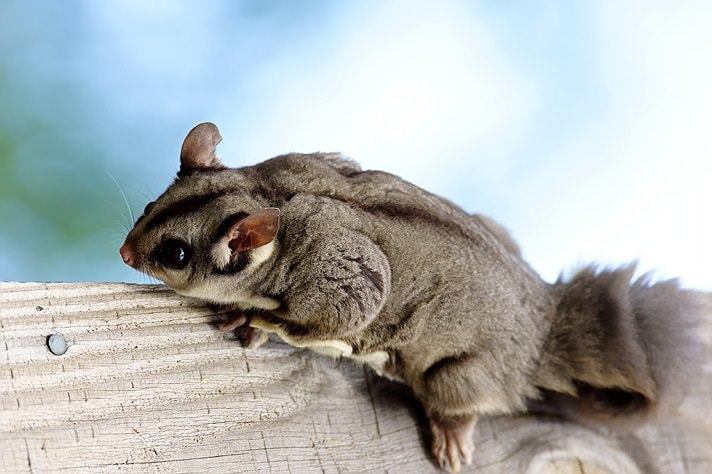1. Trauma/Accidents
The most common medical problem, far too often ending in death. Toilet drowning, broken bones, injuries from other pets, unsupervised playtime, strangulation from strings, getting claws hung up, etc. This list could go on and on. Sadly, most of the traumas and accidents are avoidable.
2. Dehydration
A common symptom of just about any illness, disease or lack of water supply. It could be caused by the water bottle balls sticking and preventing water flow. A sugar glider can totally dehydrate and die in as little as 12 hours.
Dehydration can be easily tested for by pulling up the skin at a glider’s shoulders. If the skin stays up or goes down very slowly, there is a good chance the pet is dehydrated. Veterinarians can treat this with shots of fluids under the skin. This is only a symptom, try to find the cause.
3. Parasites
Parasites are anything that attaches to and lives off a host. Mites are not common, but do occur. Giardia, however, is common (see below). Sugar gliders are not known for getting fleas or ticks, thus preventive treatment is not recommended.
4. Giardia
A common protozoan parasite that can be easily found in a fecal exam. Symptoms vary from glider to glider and can include diarrhea, weight loss, lethargy, dehydration and loss of appetite. Sometimes there are no symptoms at all. It is usually contracted via water supply or unwashed fruits and vegetables.
Your glider should get fecal exams a minimum of every six months, more often if Giardia has ever been diagnosed. Most owners use bottled spring water or water purifiers to prevent Giardia.
5. Bacterial Infections
Bacteria are everywhere. Common culprits for spreading it include your hands, improper handling of foods or unsanitary conditions. Having a vet do a culture is expensive but necessary in diagnosis.
6. Pesticide Poisoning
This can come from either direct contact with the pesticides or indirect contact (eating an insect, fruit or vegetable that was exposed to pesticides). Wash all fresh fruits and vegetables thoroughly and get your insects from a reputable breeder.
7. Hind Leg Paralysis/Calcium Deficiency
A dietary problem, caused usually from an improper balance of the vitamins and minerals in the total food intake. It could also be caused by a genetic defect of not being able to metabolize calcium properly.
Symptoms usually begin with gradual weakness in the hindquarters. It affects the bones, muscles and major organs. Note: A glider can show the symptoms of HLP and actually have an injury to its back, muscles or ligaments, a bacterial, viral or other infection.
If HLP is suspected please have X-rays taken to check for broken bones, a urinalysis done and a bacterial culture of the mouth and cloacal area taken. Left untreated, this condition will cause the system to go into total shut down.
8. Urinary Tract Infections
Unsanitary surroundings, illness and administered medications are common causes. It can be diagnosed with a urinalysis.
9. Respiratory Infections
Pneumonia and upper respiratory infections are commonly caused by drafts, improper temperatures, viruses and bacterial infections. Wheezing, whistling or general illness-type symptoms are common. However, some gliders show no respiratory distress symptoms.
10. Stress
Gliders do not handle stress well. Hair loss, biting of the tail end, self-mutilation, intestinal problems, cage circling, changes in behavior or attitude, excessive crabbing, lunging or biting are all symptoms. New environments, people, housing, cagemates, other animals, children, change of diet, smells, sounds, etc. can all cause stress.
11. Nutritional Dystrophy
It attacks the organs and immune system and symptoms may not show up for several years. Gliders whose parents were on inadequate diets or joeys that have been pulled from their parents prior to natural weaning may have weakened immune systems, intestinal and organ problems. The lack of calcium or too much calcium, too much or too little of proper vitamins and minerals are commonly seen and can be fatal. Changing diets is hard on a glider’s intestinal system. Putting a glider on a good diet doesn’t mean it can reverse damage that has already been done.
12. Lack of Information
Many veterinarians are not knowledgeable about sugar gliders. Much of the information they have was acquired from old journals, books, articles, owners and outdated websites started by well-intentioned people. Vets may try to extrapolate what they can from other species. Some don’t run all the needed tests to come up with a proper diagnosis, and treat the symptoms rather than the problems. The common tests run by most sugar glider-savvy vets include: fecal exams, urinalysis, X-rays, bacterial cultures/sensitivity tests (cloacal/oral).
By: Lori “Bourbon” Hackworth
Feature Image: Rachata Teyparsit/Shutterstock.com
Share:









